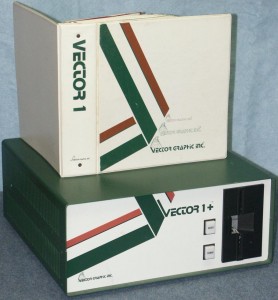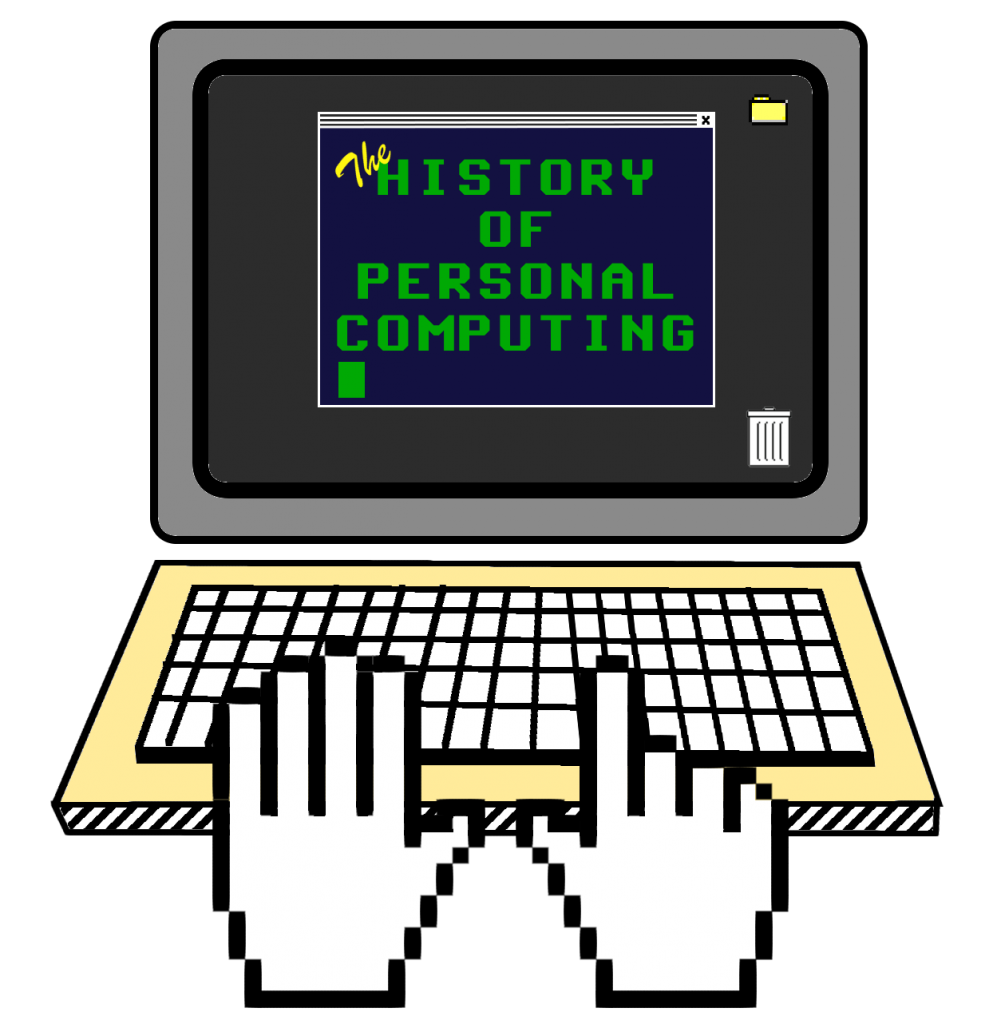Vector Graphic, Inc. Vector 1
 Vector Graphic, Inc., like Cromemco which we recently covered, started out by creating expansion cards for S-100 systems. Thier first products were an 8K static RAM card and a 256×256 pixel “high resolution” card, called HRG, or High Resolution Graphics.
Vector Graphic, Inc., like Cromemco which we recently covered, started out by creating expansion cards for S-100 systems. Thier first products were an 8K static RAM card and a 256×256 pixel “high resolution” card, called HRG, or High Resolution Graphics.
Before long, and also like Cromemco, Vector Graphic produced THEIR first S-100 clone, the Vector 1 computer, which went fully to market in 1977. One of the founders, Bob Harp, was the one who initially designed the Vector 1 system. Within the company, Bob was joined as co-owner by his wife Lore Harp, along with their next door neighbor, Carol Ely. Together, they springboarded a company that within four years, surpassed $3,000,000 revenue per month.
That was just a brief company introduction. More on their business later. Now here are some details about their premier computer system, the Vector 1 computer itself.
Given the many kinds of S-100 clones in the late 1970’s, it would be easy to distinguish the Vector 1 from the competition. All you needed to do was recognize the less industrialized color scheme of earth green and red combined with a distinctive 70’s style angled decorative stripe on the front. Other popular S-100 systems trended towards blue and black, or more neutral tones.
The case itself was made of metal. Unlike some of the earlier S-100 systems from other companies, there are only two buttons on the front of the Vector 1 because cost cutting measures were in place. Some owners had even complained that the buttons were so cheap in design that they would break, or would require several presses to activate.
On the back side of the case were plenty of DB25 cutouts for rerouting interface connectors. Ten in all. There was also a standard power socket beside the power cable input socket, allowing you to power your terminal directly off of the Vector 1, preventing a need to have access or reach to another wall socket.
Inside the case, the computer looks more traditional in an S-100 sort of way. You have a huge linear power supply on one side and the S-100 bus plane on the other. Pre-populated in the system were everything you needed to compute, an Intel 8080A CPU running at 2MHz, 1K of RAM, a 512 byte bootstrap ROM, and serial terminal output. If you wanted to save a few bucks, you could buy the Vector 1 as a kit and build it yourself.
What you didn’t have were the external I/O devices like keyboard, terminal, and storage. You also, as mentioned before, didn’t have front panel data switches like those on the Altair or IMSAI computers. If you wanted to fully operate the computer, you would have to buy those components separately.
Like almost every other S-100 system, RAM could be increased, and the system could be augmented with additional capabilities through the use of expansion cards. There was also a model called the Vector 1+, which was basically the same as the Vector 1, but with a built-in floppy drive.
Vector Graphic went on to become a very profitable and successful computer maker for a time, expanding their line from the Vector 1, all the way up to the Vector 5 series of computers, each version having its own exclusive enhancements over the rest of the Vector Graphic line of computers. They also made inroads to the word processing field with their development of the Flashwriter, which is an integrated keyboard and video controller. They also created the MEMORITE word processor software. When that software was combined Flashwriter, it rivaled dedicated word processing systems of the time. You can view the hardware manual for the Flashwriter II card on Archive.org at https://archive.org/download/bitsavers_vectorGraprIIMar79_3165925/Vector_Flashwriter_II_Mar79.pdf
But their engineering success was not equally matched in management. Unfortunately, Bob and Lore Harp believed that their success was still on a roll in the early 1980s. They even sold stock and went public with it. However, mistakes in business operations and bad judgement caused the company to lead down the path of failure. At one time, Vector Graphic had a huge supply of their Vector 3 computers on hand when the Marketing department advertised the Vector 4 somewhat prematurely, leaving Vector Graphic with a lot of Vector 3’s in stock as consumers decided to hold on to their money until they could buy a Vector 4. That, along with the trend of the company to stick with their own designs and shy away from producing products that were IBM compatible, even if they were just expansion cards, caused them to lose their edge in the industry.
Finally, through a shakeup in upper management as a result of a divorce between Bob and Lore, Bob left the company and Vector Graphics could not get their head above water again, eventually filing for bankruptcy in the late 1980’s.




January, 6th 2017 at 4:04 am
I was the PCB layout designer on the Vector 4 and 5. Oh those early days. Who knew?